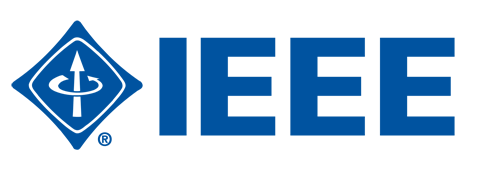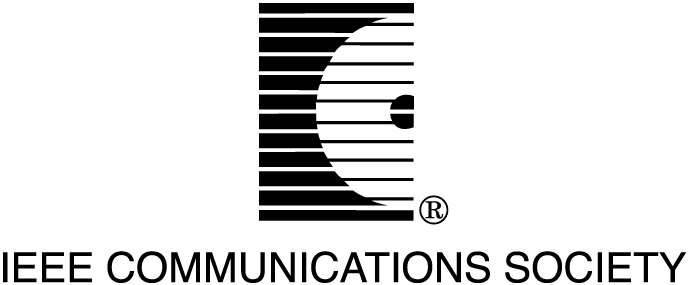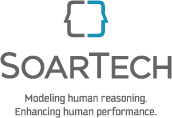Tutorials
Tutorial 1: Quantifying Multi-Agency Mission Effectiveness
Instructor: Dr. Valerie Gawron, MITRE CorporationDate: Monday, March 9, 2015
Time: 9:00 am - 12:30 pm
Abstract
In the aftermath of disasters, multi-agency collaboration is often identified as a critical need:
- “As the post-September 11 interagency threat resolution process matures, it is important for agencies to develop mechanisms and procedures that enable effective and efficient coordination” GAO-07-891R, “Aviation Security”
- “…action be taken to facilitate the sharing of terrorism information by establishing an ‘information sharing environment’ that would combine policies, procedures, and technologies that link people, systems, and information among all appropriate federal, state, local, and tribal entities…” GAO-07-375, “Progress to Address Security After 9/11”
- “During the Federal response to Katrina, four critical flaws in our national preparedness became evident: Our processes for unified management of the national response; command and control structures within the Federal government; knowledge of our preparedness plans; and regional planning and coordination.” “The Federal Response to Hurricane Katrina: Lesson Learned”.
But quantifying multi-agency mission effectiveness requires:
- Understanding effects of policies, procedures, and technologies on multi-agency operations.
- Generating quantitative data for empirically-based decision making on acquisition and policy.
- Providing an environment for government and industry to explore concepts and evaluate technologies, and
- Leveraging existing internal and external resources to support multi-agency coordination experiments: operational personnel, operational data, scenario generation tools, models and simulations,operational and/or emulated systems, and distributed interoperability infrastructure.
This tutorial describes a methodology for conducting multi-disciplinary studies in critical response events. Examples will be given for experiments conducted in airspace security, cybersecurity, hurricane recovery, and pandemic response.This multi-disciplinary tutorial is intended for both researchers and practitioners from a wide variety of fields such as communication, intelligence, business processes, defense, and health care who are interested in understanding the problem of multi-agency cooperation and decision making in the complex critical event environment and building methods for dealing with these problems.
Instructor Bio
 Valerie Gawron has a BA in psychology from the State University College at Buffalo, a MA also in psychology from the State University College at Geneseo, a PhD in Engineering Psychology from the University of Illinois, and a MS in Industrial Engineering and MBA both from the State University of New York at Buffalo. She completed postdoctoral work in environmental effects on performance at the New Mexico State University in Las Cruces and began work for Calspan directly following. She remained at Calspan for 26 years until it was eventually acquired by General Dynamics. She is presently a human systems integrator at the MITRE Corporation.
Valerie Gawron has a BA in psychology from the State University College at Buffalo, a MA also in psychology from the State University College at Geneseo, a PhD in Engineering Psychology from the University of Illinois, and a MS in Industrial Engineering and MBA both from the State University of New York at Buffalo. She completed postdoctoral work in environmental effects on performance at the New Mexico State University in Las Cruces and began work for Calspan directly following. She remained at Calspan for 26 years until it was eventually acquired by General Dynamics. She is presently a human systems integrator at the MITRE Corporation.
Dr. Gawron has provided technical leadership in Research, Development, Test, and Evaluation of small prototype systems through large mass produced systems, managed million dollar system development programs, led the design of information systems to support war fighters and intelligence personnel, fielded computer aided engineering tools to government agencies and industry, tested state-of-the-art displays including Helmet Mounted Displays, Night Vision Goggles, and Synthetic Vision Displays in military and commercial aircraft, evaluated security systems for airports and United States Embassies, conducted research in both system and human performance optimization, applied the full range of evaluation tools from digital models through human-in-the-loop simulation to field operational tests for military, intelligence, and commercial systems, directed accident reenactments, consulted on driver distraction, accident investigation, and drug effects on operator performance, and written over 380 publications including one book published in its second edition in March 2008.
Dr. Gawron has served on Air Force Scientific Advisory Board, the Army Science Board, Naval Research Advisory Committee, and National Research Council. She gives workshops on a wide range of topics to very diverse audiences from parachute testing given as part of the Sally Ride Science Festival for girls ages 8 to 14 to training applications of simulation to managers and engineers. She has worked programs for the United States Air Force, Army, Navy, Marines, NASA, the Departments of State and Justice, the Federal Aviation Administration, the Transportation Security Administration, the National Transportation Safety Board, the National Traffic Safety Administration, as well as for commercial customers. Some of this work has been international and Dr. Gawron has been to 166 countries. Dr. Gawron is an associate fellow of the American Institute of Aeronautics and Astronautics, a fellow of the Human Factors and Ergonomics Society, and a fellow of the International Ergonomics Association
Tutorial 2: Building Self-Modeling and Self-Adaptation into Cyber-Physical Situation Awareness
Instructors:
Dr. Christopher Landauer, Topcy House Consulting
Dr. Kirstie L. Bellman, Topcy House Consulting
Dr. Phyllis Nelson, Topcy House Consulting
Date: Monday, March 9, 2015
Time: 9:00 am - 12:30 pm
Abstract
The purpose of this tutorial is to show how to build systems that can make and assess their own models (and also evaluate and improve the preliminary models we may provide them) of their operational environment, of their history of interaction with that environment, and of their own behavior and internal decision processes. If we are going to build systems that can act as information partners, we will expect them to communicate among themselves and with us. We will expect them at least to interpret models suggested by us and communicate to us the models that they construct. That means that we need mechanisms of mutually compatible model interpretation (we are only trying to support cooperative behavior based on communicated models). In order for the system to build or assimilate those models, it will need to probe its environment, looking for gaps or errors in the models. This active experimentation is an essential part of situation awareness, since it provides some of the context within which situations can be interpreted. This process of identifying model weaknesses and using them to improve the models is called Model Deficiency Analysis, which is an active area of research.
Outline:
Part1. Context and Background
- The Approach
- What reflection and flexibility imply for (and require of) a system
- How can a system have enough information about its environment to act effectively?
- Biological Principles: merging of behaviors, layers of symbol systems, multiple resolution models
- Computational reflection based methods of system integration
- WRapping EXpression notation: how to write flexible generic resources
- SBEP = Scenario-Based Engineering Process: how to connect expectations with implementations
- How to build a system that makes and assesses its own models
- Applications
- Our Opinion: whether or not you use our approach, you still have to answer all of these questions
- What is still hard with this approach?
- Wrap-up
Instructor Bios
Dr. Christopher Landauer is a mathematician (Ph.D. Mathematics, Caltech, 1973) working on large-scale software managed systems, with an emphasis on the development and evaluation of formal methods and other mathematically based tools for and models of complex software systems, and on the software development processes required to make them effective and reliable. This work has included both applications and research in communication protocols, discrete-event simulations, computer security and program verification, multiple target tracking, spacecraft attitude determination, evaluation of knowledge-based systems, system integration infrastructure, natural language processing, computational semiotics and knowledge representation, model-based design and engineering of computer managed systems, including real-time, embedded, self-organizing, and reflective systems. He joined Topcy House Consulting in 2001.p>
 Dr. Kirstie L. Bellman is a Neurophysiologist (Ph.D. UCSD 1979), Computer Scientist and Mathematician, working on large-scale software-managed systems, with a combined emphasis on formal methods and the appropriate use of biological principles. She has been a DARPA Program Manager from 1993-1997, in charge of mathematical and formal methods programs. Dr. Bellman has over thirty-five years of academic, industry, and consulting experience in the development of both conventional computer models and applications and artificial intelligence. Her published research spans a wide range of topics in the cognitive, neuro-physiological, and information processing sciences. In addition to playing a leading role in the development of programs in error analysis and evaluation of expert systems, her group did nationally recognized research in extending the applications of expert systems to open-ended design problems and to the integration of mathematical and artificial intelligence techniques.
Dr. Kirstie L. Bellman is a Neurophysiologist (Ph.D. UCSD 1979), Computer Scientist and Mathematician, working on large-scale software-managed systems, with a combined emphasis on formal methods and the appropriate use of biological principles. She has been a DARPA Program Manager from 1993-1997, in charge of mathematical and formal methods programs. Dr. Bellman has over thirty-five years of academic, industry, and consulting experience in the development of both conventional computer models and applications and artificial intelligence. Her published research spans a wide range of topics in the cognitive, neuro-physiological, and information processing sciences. In addition to playing a leading role in the development of programs in error analysis and evaluation of expert systems, her group did nationally recognized research in extending the applications of expert systems to open-ended design problems and to the integration of mathematical and artificial intelligence techniques.
 Dr. Phyllis R. Nelson received the PhD degree from UCLA, an MS from the California Institute of Technology, and a BS from California State Polytechnic University, Pomona, all in electrical engineering. She joined the Electrical and Computer Engineering faculty at the California State Polytechnic University, Pomona, in 1999 and is currently a full professor and Department Chair. She has been the co-director of the Center for Macromolecular Modeling and Materials Design since 2005. She also joined Topcy House Consulting in 2006. Previously, she was research staff and a lecturer in the Electrical Engineering department at UCLA and Member of the Technical Staff at several aerospace companies. Her current research interests include applications of self-x methods to cyber-physical systems, organic computing, and the development of design and testing methodologies for complex, multi-agent systems.
Dr. Phyllis R. Nelson received the PhD degree from UCLA, an MS from the California Institute of Technology, and a BS from California State Polytechnic University, Pomona, all in electrical engineering. She joined the Electrical and Computer Engineering faculty at the California State Polytechnic University, Pomona, in 1999 and is currently a full professor and Department Chair. She has been the co-director of the Center for Macromolecular Modeling and Materials Design since 2005. She also joined Topcy House Consulting in 2006. Previously, she was research staff and a lecturer in the Electrical Engineering department at UCLA and Member of the Technical Staff at several aerospace companies. Her current research interests include applications of self-x methods to cyber-physical systems, organic computing, and the development of design and testing methodologies for complex, multi-agent systems.
Tutorial 3: Humans and Autonomous Agents Dwelling on Networked High Seas
Instructor: Dr. Henry Hexmoor, Associate Professor, Southern Illinois UniversityDate: Monday, March 9, 2015
Time: 1:30 pm - 5:00 pm
Abstract
Agents cohabit our devices, vehicles, houses, schools, hospitals, banks, and governments. People and agents form myriad of networks akin to oceans of water molecules. Majority of our networks are complex engineering networks that facilitate physical, social, and economic exchanges. Autonomous agents in deliberate networks have limited states and scopes. Agents in unintended or under-engineered networks cohabited by humans operate are often without adequate safeguards of rules as if on high seas. In this talk, I review nuances of networks and opportunities they offer us. I then highlight the high seas network and human and agent teams that navigate them. I will focus on scenarios that illustrate different approaches, including through the use of agents on networks and suggest some key challenges that need to be addressed to drive the field forward.
Outline:Part 1: Introduction and Background on crises and the need for Strategic Reasoning
Part 2: Game Theory in Networks: The state of the Practice
Part 3: Promising Frontiers: Emerging and the state of the Art
Intended audience: This tutorial is intended for both researchers and practitioners from a wide variety of fields such as communication, intelligence, business processes, personal computing, and databases, who are interested in demystified view of networks.
Instructor Bio
 Dr. Henry Hexmoor is Associate Professor of Computer Science at Southern Illinois University, where he works on Agents, intelligent systems, and networks. He received the M.S. degree from Georgia Tech, Atlanta, and the Ph.D. degree in computer science from the State University of New York, Buffalo, in 1996. He is a long time IEEE senior member. He has taught at the University of North Dakota before a stint at the University of Arkansas. He has published widely in artificial intelligence. His work has sought to take a principled approach to the development of agent principles including robotic systems.
Dr. Henry Hexmoor is Associate Professor of Computer Science at Southern Illinois University, where he works on Agents, intelligent systems, and networks. He received the M.S. degree from Georgia Tech, Atlanta, and the Ph.D. degree in computer science from the State University of New York, Buffalo, in 1996. He is a long time IEEE senior member. He has taught at the University of North Dakota before a stint at the University of Arkansas. He has published widely in artificial intelligence. His work has sought to take a principled approach to the development of agent principles including robotic systems.
Tutorial 4: A Formalization of Situation and Its Practical Implications
Prof. Mieczyslaw Kokar, Northeastern UniversityDate: Monday, March 9, 2015
Time: 1:30 pm - 5:00 pm
Abstract
The term "situation" is used very often in both informal conversations and scientific publications. While it seems that the colloquial use of this term is rather well understood, when it comes to the formalization of this term in logic and mathematics, or in computer languages, significant differences in the semantics/interpretation of this word become apparent. The implication of this [situation] is that scientific results obtained for one definition of situation are not applicable to a solution that relates to a different meaning. Furthermore, computer programs that address situational awareness, are not interoperable.
In this tutorial, the notion of situation will be introduced at various abstraction levels. First, the problem of situational awareness formulated by Endsley, as well as the place of situational awareness in the JDL Data Fusion Model, will be overviewed. Then, Situation Theory of Barwise, Perry and Devlin will be discussed. The main aspects of this theory will be represented in an ontology (Situation Theory Ontology – STO). Finally, it will be shown how computer programs can make use of such a formalization for achieving situational awareness.
This tutorial is directed towards both researchers and practitioners who want to achieve a deeper understanding of the problem of situational awareness and situation management. The participants are expected to have some basic knowledge of formal logic. Familiarity with declarative programming is desirable but not required.
In this tutorial the participants will learn: how situation can be formalized in logical terms; what an ontology is; how to represent ontologies in the OWL language; how to represent descriptions of scenarios in OWL; how to build rules on top of an ontology; how to use general reasoning tools to monitor or query situations; what kind of situation-related reasoning can be performed and how. The tutorial will close with a list of challenges to the situation awareness research community.
Instructor Bio
 Mieczyslaw "Mitch" M. Kokar is a Professor in the Department of Electrical and Computer Engineering, Northeastern University in Boston. He received his M.S. in computer engineering and Ph.D. in computer systems engineering from Wroclaw University of Technology, Poland. He is an active researcher in Information Fusion, Cognitive Radios, Ontologies, Self-Controlling Software and Modeling Languages. Dr. Kokar's interest in Information Fusion is in the application of formal methods to situation awareness. He has authored and co-authored over 190 journal and conference papers. He is on Editorial Board of Journal of Information Fusion (Area Editor for Information Fusion Theory) and Program Committee member of numerous conferences. He is a senior member of IEEE and ACM.
Mieczyslaw "Mitch" M. Kokar is a Professor in the Department of Electrical and Computer Engineering, Northeastern University in Boston. He received his M.S. in computer engineering and Ph.D. in computer systems engineering from Wroclaw University of Technology, Poland. He is an active researcher in Information Fusion, Cognitive Radios, Ontologies, Self-Controlling Software and Modeling Languages. Dr. Kokar's interest in Information Fusion is in the application of formal methods to situation awareness. He has authored and co-authored over 190 journal and conference papers. He is on Editorial Board of Journal of Information Fusion (Area Editor for Information Fusion Theory) and Program Committee member of numerous conferences. He is a senior member of IEEE and ACM.




